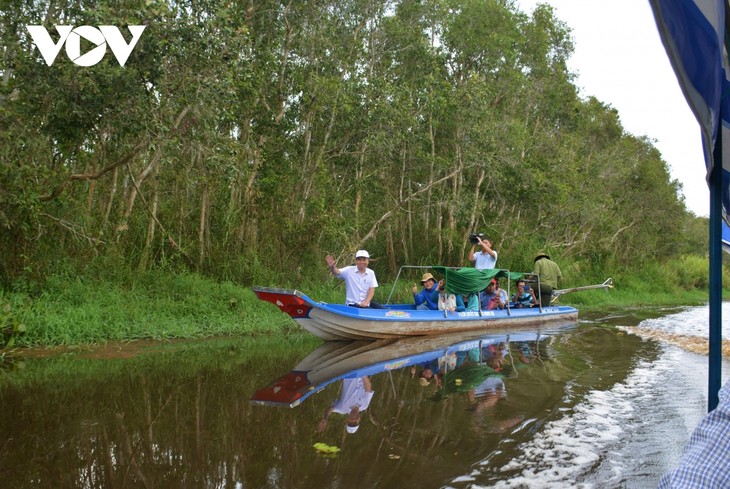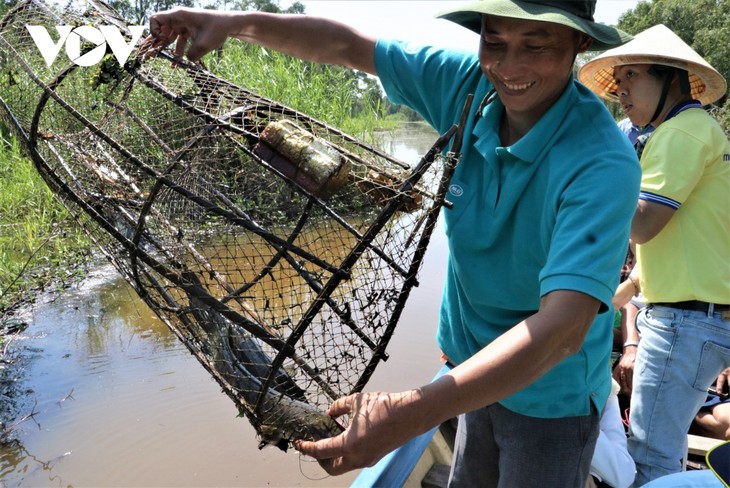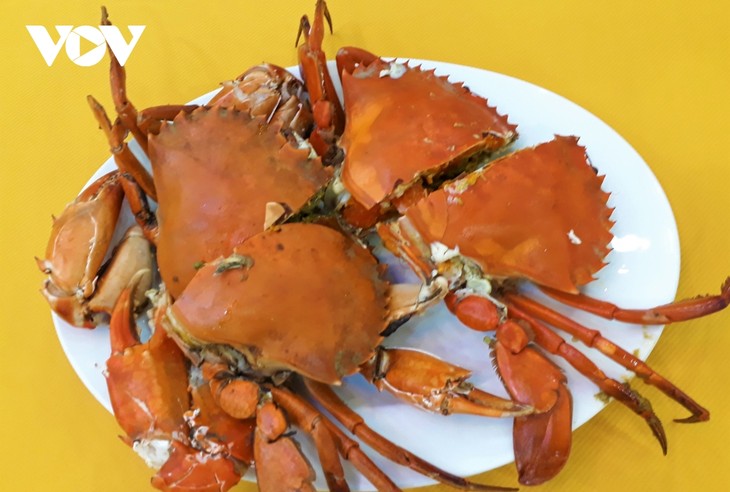(VOVWORLD) - Ca Mau, Vietnam’s southernmost province and one of four key economic centers in the Mekong Delta, has a 54-kilometer coastline and two ecosystems of mangrove and cajeput forests recognized by UNESCO as a World Biosphere Reserve. With favorable natural conditions for tourism development, many community-based ecotourism models have been launched and are thriving.
 Ca Mau is endowed with beautiful nature Ca Mau is endowed with beautiful nature |
Muoi Ngot, a community-based ecotourism site established in 2015 was one of the earliest tourist resorts in Tran Van Thoi district.
Pham Duy Khanh, Muoi Ngot’s owner, says the site has grown from a few hectares to almost 60 hectares. His family has planted fruit trees and developed “Gac keo ong” apiculture, which is the raising of honey bees in the wild and has been recognized as a national intangible cultural heritage.
Khanh’s family has made apiculture a primary tourist attraction, and operates tours of his 60-hectare site on which visitors can observe basket fishing and beekeeping and taste the local honey.
Khanh recalled, “The Muoi Ngot community-based ecotourism site was first known for apiculture. Visitors to the site got to experience the collection of honey. We plan to work with the local administration to create a bee festival to popularize apiculture.”
People in the U Minh forest have made the most of local advantages to develop community-based ecotourism.
 Visitors are observing basket fishing Visitors are observing basket fishing |
Nguyen Thi Tuyet Hong, a tourist from Ho Chi Minh City, said, “I feel close to nature when I visit the U Minh forest. It’s the first time I’ve seen a “con lom”, a fishing tool used to catch fish automatically. It’s interesting for us to collect the fish later. Bees build hives in the natural environment. City residents never see such things.”
People in Ngoc Hien district are taking advantage of the Ho Chi Minh road to develop community-based ecotourism.
Key products of Ngoc Hien include Rach Goc dried shrimp, Nam Can mud crabs, and the national heritage craft of making salted and fermented “ba khia” (three-striped crab).
Nguyen Van Hon, Director of the Hoang Hon (Sunset) Tourism Complex in Ngoc Hien, said, “The wildly beautiful scenery is an advantage. Many people in Ca Mau are thinking of developing tourism.”
“Another advantage is that we have national border market GPS 0001 on Cape Ca Mau in Dat Mui commune, which is surrounded by sea areas ideal for tourism development,” said Hon.
Tieu Minh Tien, Deputy Director of the provincial Culture, Sports and Tourism Department, says Ca Mau has improved its tourism products to attract visitors.
Specialties like U Minh honey, Rach Goc dried shrimp, Nam Can mud crabs, U Minh dried snakeskin gourami, and Cai Doi Vam dried creamfish have become widely known.
 Ca Mau crabs are widely known Ca Mau crabs are widely known |
This year Ca Mau plans to set up a culture tourism village in Dat Mui commune to introduce traditional crafts and local delicacies.
According to Tien, “Community-based tourism is Ca Mau’s main tourism product. Under the 2021 tourism development program, Ca Mau plans to develop agricultural tourism products linked to the province’s items certified by the One Commune-One Product program to develop rural economies.”
Ca Mau now has 14 community-based eco-tourism sites contributing to making tourism the province’s spearhead economic sector.